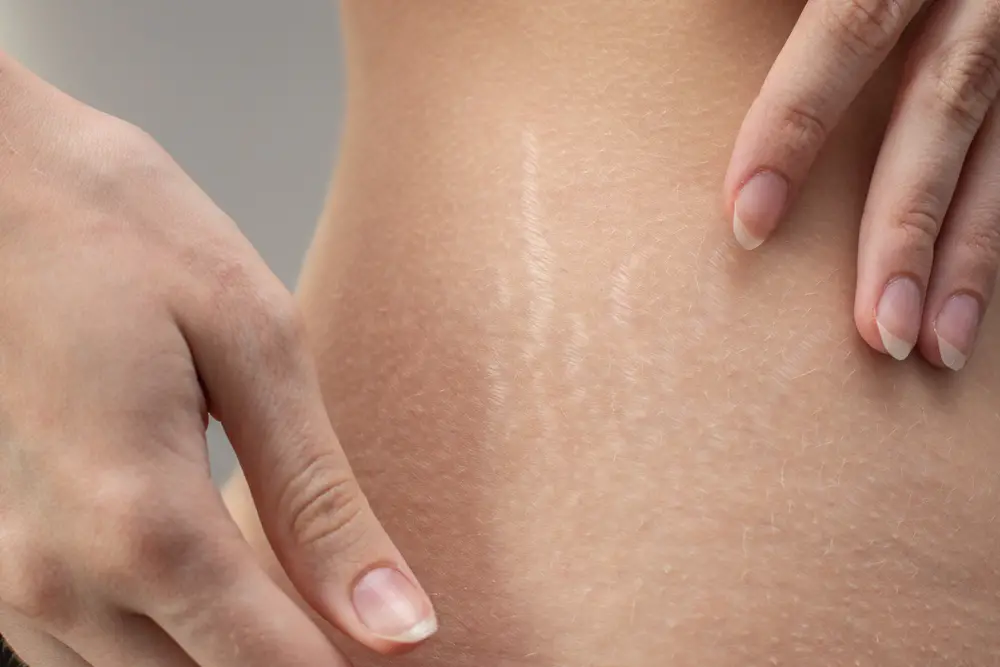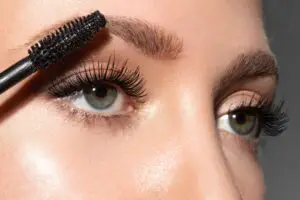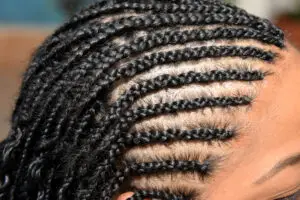Stretch marks are a common skin concern, regularly appearing on the abdomen, breasts, hips, and buttocks as a result of factors such as pregnancy and weight fluctuations. Although not harmful or painful, many individuals may be concerned with the impact of stretch marks on their skin’s appearance.
In some cases, pimples can develop within these stretch marks, posing an additional aesthetic concern. To tackle this issue effectively, it is crucial to understand the underlying causes and preventive measures.
There are numerous factors contributing to the development of pimples within stretch marks, including insufficient collagen and elastin production. These proteins play a vital role in maintaining skin elasticity and preventing the formation of stretch marks.
Incorporating skincare habits that promote collagen synthesis, alongside a balanced diet rich in essential nutrients, can help to prevent pimples from emerging within stretch marks and improve overall skin health.
By identifying and understanding the root causes of pimples in stretch marks, individuals can take appropriate steps to maintain healthy, blemish-free skin. This involves a combination of lifestyle adjustments and skincare practices, which work together to prevent the growth of pimples within stretch marks, allowing individuals to feel more confident about their skin’s appearance.
Understanding Stretch Marks
Stretch marks, also known as striae, are lines or grooves that appear on the skin due to the breakage or loss of elasticity in the skin’s collagen and elastin fibres. These fibres play a vital role in ensuring the skin remains flexible and can stretch or contract as needed.
When the skin is stretched or experiences rapid growth, as in the cases of pregnancy, weight gain, or puberty, the collagen and elastin fibres are put under pressure. If this pressure is too great, the fibres can break or become damaged, resulting in the formation of stretch marks.
These marks are initially red or purple in colour but tend to fade over time to become lighter and silvery. They are most commonly found on areas of the body where large amounts of fat are stored, such as the abdomen, thighs, buttocks, and breasts.
To maintain the skin’s elasticity and help prevent stretch marks, it is essential to take care of your skin’s health and support collagen and elastin production. This can be achieved through a balanced diet, keeping the skin well-hydrated and moisturised, and implementing a regular exercise routine.
Stretch marks are usually harmless and do not cause any medical issues. However, they can sometimes lead to the development of pimples or other skin problems when the skin’s pores become blocked or irritated.
In summary, stretch marks are the result of a loss of elasticity within the skin due to damaged or broken collagen and elastin fibres caused by various factors, most commonly rapid growth or weight gain. To minimise the appearance and risk of stretch marks, it is important to maintain a healthy lifestyle, support overall skin health, and promote collagen and elastin production.
Causes of Stretch Marks and Pimples
Stretch marks and pimples are common skin occurrences that can be triggered by various factors. Understanding the causes of these conditions is essential for effective prevention and management.
Stretch marks are predominantly caused by rapid changes in the body, such as pregnancy, weight gain, growth spurts, and muscle development through bodybuilding or weightlifting. These marks can appear anywhere on the body and are more likely to affect those with a family history of stretch marks or specific ethnic backgrounds, such as Black, Hispanic, East Asian, or South Asian.
Apart from external factors like growth and weight gain, the hormone cortisol also plays a significant role in the formation of stretch marks. Increased levels of cortisol in the body can weaken the skin’s elastic fibres, making it more susceptible to tearing and subsequently, stretch marks. Certain medical conditions like Marfan syndrome can also contribute to the development of stretch marks.
On the other hand, pimples are a form of acne — a skin condition characterised by inflammation of the hair follicles and oil glands. Pimples in stretch marks can be triggered by hormonal changes, which can disrupt the natural balance of the skin and lead to the formation of acne. This is particularly relevant during puberty when hormone levels fluctuate significantly.
A family history of acne may also predispose an individual to develop pimples, as genetics can influence how sensitive one’s skin is to hormone fluctuations. Other common factors contributing to acne formation include poor skin care practices, excessive oil production, bacterial growth, and certain medications.
In summary, both stretch marks and pimples can be triggered by a range of factors, including hormonal changes, rapid weight gain or loss, growth spurts, and individual medical and family history. Identifying the specific cause for each individual may help them implement preventive measures and tailor their skincare routine accordingly.
Prevention of Stretch Marks and Pimples
Maintaining healthy skin is essential to prevent both stretch marks and pimples. Incorporating a proper skincare routine and choosing the right products can help achieve this goal. This section focuses on moisturising, adopting a balanced diet, and using effective skincare products.
Keeping the skin moisturised is crucial, as dry skin can lead to the formation of stretch marks and pimples. Regularly applying lotions and oils, such as bio-oil, can help maintain skin elasticity and hydration, reducing the risk of stretch marks. Moreover, it prevents the skin from becoming too dry, decreasing the chance of pimples forming.
In addition to moisturising, ensuring a balanced diet rich in essential nutrients promotes healthy skin. Consuming foods high in vitamins, minerals, and proteins can help keep the skin supple and elastic. For example, including foods rich in vitamin E and vitamin C in your diet can boost collagen production, which improves skin elasticity and structure.
Additionally, incorporating foods containing zinc and protein can contribute to better skin healing and regeneration processes.
Choosing the appropriate skincare products is also vital in preventing stretch marks and pimples. It is essential to select products that contain beneficial ingredients, such as vitamin E, vitamin C, and zinc, which can not only help in preventing stretch marks but also address pimples.
Opt for non-comedogenic products that do not clog pores, as clogged pores often lead to the formation of pimples.
In conclusion, adopting a proactive skincare routine that includes regular moisturising, consuming a balanced diet, and carefully selecting skincare products can significantly reduce the likelihood of stretch marks and pimples.
Identifying Stretch Marks Colour Changes
Stretch marks are a common skin issue experienced by many individuals. Noticing colour changes in these marks is essential in order to differentiate them from other skin conditions.
When stretch marks first appear, they can exhibit a variety of colours depending on an individual’s skin tone. The most commonly observed hues include red, pink, purple, black, and blue.
In the early stages, these marks tend to be more prominently coloured and may feel slightly raised or swollen. It is also possible to experience itchiness or redness around the affected area. As time passes, the colour of stretch marks will typically fade, transitioning from the initial vivid shades to a lighter, silver-like hue.
The fading of stretch marks occurs as the skin adapts to the changes responsible for causing them in the first place. For instance, the skin may experience rapid growth or stretching during pregnancy or due to significant weight gain. The fading is a natural process, showcasing the skin’s ability to heal and adjust.
It is important to recognise these colour changes in stretch marks as a normal part of their progression. By understanding these variations, individuals can differentiate stretch marks from other skin issues and develop appropriate treatment or prevention strategies.
In conclusion, being aware of the colour changes in stretch marks helps individuals identify them accurately and manage their appearance effectively. Remember that the marks may begin in striking colours like red, pink, or purple, but they will generally fade to a silver tone over time. Taking note of these colour changes is an essential step in addressing stretch marks appropriately.
Treatments for Pimples and Stretch Marks
A dermatologist or health care provider may suggest various treatments for stretch marks and pimples. These treatments can address both issues, leading to smoother and more even skin.
One common treatment is the use of retinoids. Derived from vitamin A, retinoids like tretinoin are applied topically to the skin and can help improve the appearance of stretch marks less than a few months old by boosting collagen production. Retinoids are also effective in treating acne-prone skin due to their exfoliating properties.
Glycolic acid is another treatment option for both acne and stretch marks. As an alpha-hydroxy acid, glycolic acid helps to exfoliate and brighten the skin, while also promoting collagen growth. This increase in collagen can help diminish the appearance of stretch marks and acne scars.
Laser therapy can be beneficial in treating both pimples and stretch marks. Resurfacing lasers are used to remove the top layer of the skin, promote collagen growth, and reduce the appearance of scars and stretch marks. Excimer laser therapy, on the other hand, targets melanin deposits and aims to even out the skin tone in areas affected by stretch marks.
Microneedling is a minimally invasive procedure that can help stimulate the growth of collagen in the skin. This boost in collagen can reduce the appearance of stretch marks and acne scars. The process involves using a device with fine needles, which creates tiny punctures in the skin to initiate the body’s natural healing response.
Another treatment option is the use of hyaluronic acid, which can improve skin hydration and stimulate collagen production. Products containing hyaluronic acid can help to plump the skin and smooth out acne scars and stretch marks.
Microdermabrasion is a non-invasive treatment that can help treat stretch marks, acne scars, and pimples by exfoliating the top layer of skin. This process removes dead skin cells and facilitates new cell growth, leading to an overall improvement in the skin’s appearance.
In summary, there are several treatments available for addressing both pimples and stretch marks. Consulting a dermatologist and focusing on boosting collagen production, exfoliating the skin, and maintaining hydration can lead to healthier and more even skin.
Stretch Mark and Pimple Care during Pregnancy and Nursing
During pregnancy and nursing, it is common for women to experience changes in their skin, including stretch marks and pimples. To maintain proper skincare and minimize the occurrence of these skin conditions, follow the tips below.
Firstly, it is essential for pregnant women and nursing mothers to stay hydrated. Drinking plenty of water helps to maintain skin elasticity and reduce the likelihood of stretch marks. Incorporating a healthy diet rich in vitamins and minerals, particularly vitamins A, C and E, can also improve skin health and prevent pimples.
Avoid using any skincare products containing retinoid creams, as they are not recommended for pregnant women or nursing mothers. Instead, opt for gentle, oil-free cleansers that will not irritate your skin. Make sure to moisturise regularly with a fragrance-free and hypoallergenic moisturiser to keep the skin hydrated and prevent itching.
Maintain a consistent skincare routine, as hormones may fluctuate during pregnancy and nursing, potentially leading to more frequent breakouts. Keeping your skin clean and moisturised can help to prevent these pimples.
Exercise is another factor that can play a role in maintaining healthy skin during pregnancy and nursing. Engaging in moderate physical activities encourages better blood circulation, which can help your skin retain its elasticity and reduce the appearance of stretch marks.
Lastly, it is crucial to avoid scratching or picking at pimples and stretch marks, as this can cause further irritation and potentially lead to scarring. Instead, allow your skin to heal naturally and consult with a healthcare professional if you are concerned about any skin changes during pregnancy or nursing.
By following these tips, pregnant women and nursing mothers can maintain healthy skin and minimize the occurrence of pimples and stretch marks during this crucial stage of their lives.
When to Seek Medical Advice
It’s crucial to know when to consult a healthcare professional if you’re experiencing pimples in stretch marks. While stretch marks are often harmless, it’s vital to pay attention to any unusual symptoms, as they might indicate a more serious underlying condition.
When pimples appear in the stretch marks on your stomach, thighs, or buttocks, it may be challenging to differentiate them from other skin conditions like psoriasis or skin cancer. Keep an eye out for symptoms such as severe itching, bleeding, or changes in the colour, shape, or size of the pimple. If these symptoms persist or worsen, it’s essential to seek medical advice for proper diagnosis and treatment.
It is also important to consult a healthcare professional if your stretch marks cause significant discomfort or have a negative impact on your self-esteem. They may recommend treatments like retinoid creams, which can improve the appearance of younger stretch marks by rebuilding collagen in the skin.
However, it’s crucial to discuss the use of such creams with a healthcare professional, as they may have side effects or not be suitable for everyone.
In some cases, pimples in stretch marks can result in scarring or dark spots. If you notice any of these changes, it’s essential to reach out to a healthcare professional, who may provide treatments to prevent further complications. Additionally, keep an eye out for deep wrinkles or pronounced indented streaks, as these might require further medical evaluation.
In conclusion, monitoring your stretch marks and any associated pimples is vital for maintaining your skin’s health. Be aware of unusual symptoms or changes in appearance, and do not hesitate to seek medical advice when necessary. By staying vigilant and consulting healthcare professionals when needed, you can ensure proper diagnosis and treatment for any underlying conditions.
Frequently Asked Questions
How can I treat folliculitis on stretch marks?
To treat folliculitis on stretch marks, it is important to keep the affected area clean and dry. Using gentle cleansers and avoiding harsh or abrasive soaps can help maintain the skin’s natural balance.
Topical treatments, such as over-the-counter antibiotic creams, may also be effective. In more severe cases, a doctor or dermatologist may prescribe oral antibiotics to address any underlying infection.
What to do with boils on stretch marks?
Boils on stretch marks can be painful and uncomfortable. Applying a warm compress to the affected area can help alleviate pain and encourage the boil to come to a head. Once this occurs, it is essential not to squeeze or pop the boil, as this can lead to further infection.
Instead, keep the area clean, and apply an over-the-counter antiseptic ointment or cream. If the boil persists or worsens, seek medical attention.
How to manage red pimples on stretch marks?
Managing red pimples on stretch marks can be achieved through a combination of skincare and lifestyle habits. Gently cleansing the affected area with mild soap can help prevent irritation. Additionally, using non-comedogenic skincare products can ensure that pores are not clogged, further exacerbating the issue.
Maintaining a healthy diet and staying well-hydrated can also support overall skin health.
What causes breakouts on stretch marks during pregnancy?
Breakouts on stretch marks during pregnancy can occur due to hormonal fluctuations, as well as the skin’s increased elasticity and moisture retention. These changes can lead to clogged pores and inflammation.
To manage breakouts during pregnancy, it is essential to maintain a consistent skincare routine, avoid harsh or irritating products, and consult a healthcare professional for guidance on any topical treatments that may be unsafe during pregnancy.
How to deal with fluid-filled bumps on stretch marks?
Fluid-filled bumps on stretch marks can be caused by various factors, including irritation, infection, or an allergic reaction. To manage these bumps, keep the affected area clean and dry, and avoid exposure to potential irritants.
Over-the-counter hydrocortisone cream may help reduce inflammation and itching, but if the condition persists or worsens, consult a medical professional for further evaluation and treatment.
How to address red bumps on stretch marks for non-pregnant individuals?
Non-pregnant individuals experiencing red bumps on stretch marks should follow a consistent and gentle skincare routine, avoid triggering factors such as friction and tight clothing, and use appropriate skincare products for their skin type.
If the bumps persist or worsen, it may be helpful to consult a dermatologist, who can recommend targeted treatment options and help to identify any underlying causes that may be contributing to the issue.

I’m Jennifer a beauty and wellness expert. I believe in promoting a sustainable and healthy lifestyle from within. Helping people feel good is my passion; whether it’s teaching yoga or offering skincare advice.







